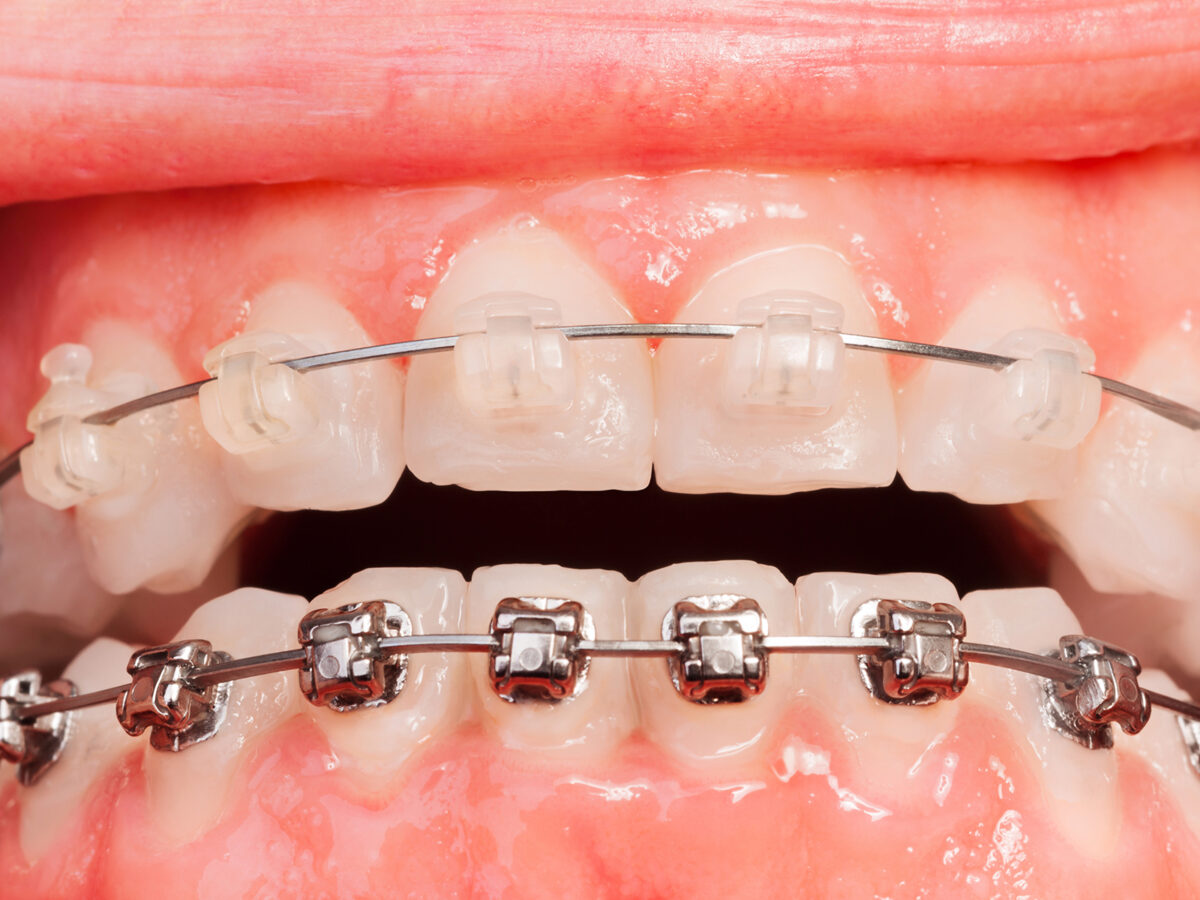Blog
Dental hygiene tips for healthy teeth & gums

Ceramic Braces vs Metal Braces: Which is Better?
If misaligned teeth are an issue for you and you are considering getting an orthodontic treatment done, then you have come to the right place to gain all the information needed to make a decision on the type of braces.
Today the shape of orthodontic treatment has changed many folds from the old time when metal braces used to be the only option. Now apart from metal brackets, you have ceramic or clear braces as well as Invisalign which are clear trays. All these options can fix a range of cosmetic issues with your smile, each with its own strengths and weaknesses.
Invisalign can fix most dental alignment issues ranging from crooked teeth to gapped and crowded teeth. But for severe and more complicated cases dentists recommend braces that have the capacity of moving teeth a longer distance than Invisalign.
When it comes to braces, there are primarily two choices available to you: metal and ceramic. Which one to choose depends entirely on you, your desire for more aesthetically appealing brackets, your budget, etc. So, let us touch upon some of the major differences between these two types of braces and help you decide between them.
What Are Ceramic Braces?
Ceramic braces are also known as clear braces as they use brackets made of tooth-colored polycrystalline alumina that blend relay well with your teeth color.
- These brackets are less noticeable and subtler than alloy brackets.
- The wire that connects these clear brackets could also be made of tooth-colored material which further decreases the visibility of these brackets.
- Working professionals and teens prefer these brackets as they can straighten their teeth without making them feel awkward in social setups.
- Since these brackets are of light shade, they can easily get colored or stained if you have beverages like wine or coffee.
- They are in general more expensive than metal brackets.
What are Metal Braces
Metal braces are made up of medical-grade stainless steel material and have alloy wires strung through these brackets. The wires are typically made of durable stainless steel.
- These brackets use rubber bands to make additional corrections to the teeth.
- These brackets are very visible to others.
- These brackets are also highly durable and completely resistant to stains.
Comparison Between Metal and Ceramic Brackets
Both these braces use a similar design to give you straight teeth and a dazzling smile, the difference lies in the materials used. Let us see a comparison of both of them on various parameters:
| Parameter | Metal Brackets | Ceramic Brackets |
| Aesthetics | They are very visible and appear bulky, making them less pleasing to the eyes. They can make your teeth look all juggled up with silver brackets and wires. | These are tooth-colored or clear brackets and are barely noticeable. They give you high aesthetic results so if pleasant-looking braces are your priority, then you should go for these. |
| Durability and strength | Alloy braces are much sturdier than ceramic ones and last longer. | These brackets tend to chip off when used for a long time. If the duration of our treatment is longer, then your doctor might suggest you should go for metallic brackets.
These brackets also stain easily, and you would have to avoid eating or drinking some highly pigmented foods and beverages or use a straw for drinking. If you have these brackets on the lower front teeth as well then it could erode the enamel on the backside of the upper teeth when you bite or chew since these braces are made of abrasive material. That is why for patients with excessive overbite dentists suggest metal brackets for the lower set of teeth. |
| Extent of correction | These brackets can withstand high levels of pressure hence your dentist would recommend them if your teeth need a lot of correction. | These do not do well with highly complicated alignment issues as the material can not endure the kind of pressure needed in such cases. |
| Cost | They are typically less expensive so if you have a tight budget, you might want to go for these brackets. | These are made from more delicate and costly material hence their charges are more than metallic ones. |
| Sensitivity | Sensitivity towards hot and cold food could be accentuated while wearing these braces. | Sensitivity is much less with these brackets as compared to alloy ones. |
| Speed of teeth movement | Since they are sturdier, they can move teeth faster than any other aligners. | Since they are more fragile and prone to breaking easily, they move teeth slower than metal braces. When there is a breakage, you might have to spend more time in appointments to repair these brackets which further delays the treatment time. |
| Discomfort | These braces are not as comfortable as ceramic ones and often give a metallic taste to the mouth. | They do not have any taste and feel more comfortable than their alloy counterparts. |
Both metal and ceramic brackets can effectively straighten your teeth. Which one you choose depends on your priorities and likes. If being less visible is more important to you than durability and strength then you should go for ceramic brackets. On the other hand, if budget is an issue for you, metal orthodontic appliances will be a better fit for you as they are cheaper than ceramic ones. Maintaining both brackets properly is important during the course of your treatment. Food can get stuck and hide easily within these brackets, which needs careful removal else you might develop swollen gums and cavities.
